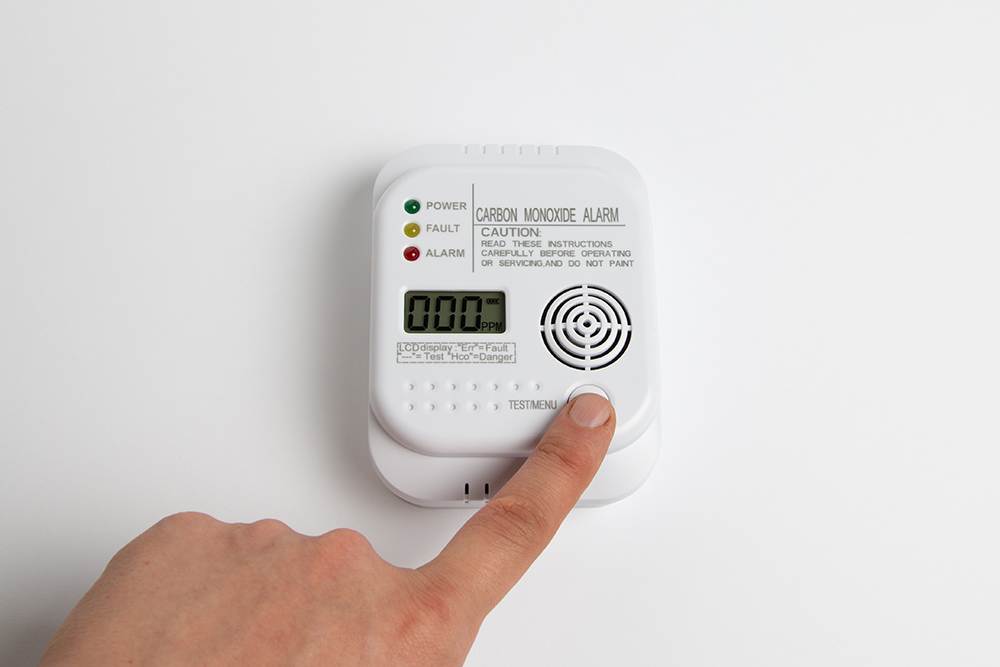Carbon Monoxide Safety

Carbon monoxide (CO) is a clear, odorless gas produced by burning fuels like natural gas, propane, oil, wood, kerosene or charcoal. At high levels, CO can kill a person in minutes. Fetuses, infants, older adults and people with anemia or a history of heart or respiratory disease can be especially susceptible.
Common CO causes
- Fuel-burning appliances that are not vented properly or that are used incorrectly, including gas ranges/ovens, water heaters, furnaces, clothes dryers, etc.
- Gasoline-powered snowblowers, emergency generators, lawn mowers, etc.
- Idling cars
- Charcoal or gas grills
Symptoms of CO poisoning
- Low levels of CO poisoning may cause shortness of breath, nausea or headaches
- Moderate levels can cause severe headaches, dizziness, confusion, nausea or fainting
- Moderate levels of exposure over a long period of time can cause death
Many of these symptoms are similar to those caused by the flu, food poisoning or other illnesses.
Be safe
If you think you have symptoms caused by CO poisoning:
- Get fresh air immediately. Open doors and windows.
- Call 911 if you have CO poisoning symptoms and seek medical attention. Typically, this means an emergency room visit.
- Leave the house.
- If no one has CO poisoning symptoms, call MGE at 608-252-7000. There will probably be a fee to have a technician come to your home.
Take steps to prevent CO poisoning:
- Have appliances or equipment that burn fuels such as natural gas, propane, oil or wood inspected by a trained professional at the beginning of every heating season. This includes your furnace, water heater, range, oven, dryer, space heater and fireplace.
- Purchase and install CO alarms that are Underwriters Laboratories (UL) approved. Do not use an alarm as a substitute for proper use and maintenance of your appliances and equipment.
- Make sure that the exhaust vents, flues and chimneys in your home are working properly.
- Ovens and stoves that burn natural gas typically do not exhaust to the exterior of the house. If you're operating a gas stove or oven for hours, it's important to ventilate. If you don’t have a hood over your stove, a fan in the ceiling or a down-drafting range that vents to the outside, crack a window.
Remember these important tips:
- Don't use a gas oven to heat your home, even for a short time.
- Don't use a charcoal grill indoors, even in a fireplace.
- Don't ignore symptoms, especially if more than one person has them. If you do nothing, you could lose consciousness and die.
CO detectors
MGE recommends at least one CO alarm in every home. We prefer plug-in alarms rather than battery-operated models. No battery changing is required.
- Read the owner's manual and follow manufacturer's instructions.
- Look for the UL label. Only buy an alarm that meets UL Standard 2034.
- Install your detector on a wall near a sleeping area so you wake up if an alarm sounds.
- Test the unit regularly. All units have a test button.
Important: A CO alarm should never be a substitute for having your heating system serviced regularly.

